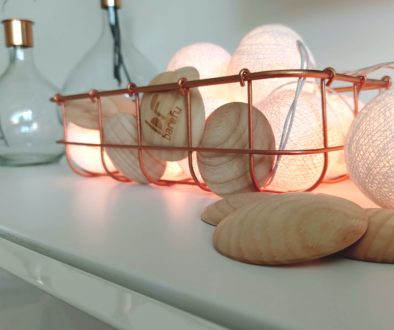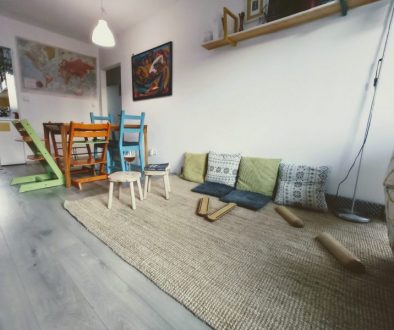Climbing and barefoot under the rock
From extreme to extreme … or from climbing to barefoot and back
My last climbing experience made me think about the relationship between climbing and barefoot. Anyone who tried climbing shoes understood how Cinderella’s sister felt when she tried to dig into the small shoes (In Slovak version of Cinderella/Aschenputtel, the slipper is so small that no other maiden can wear it). However, if those shoes were rubbery, she would most likely have better climbing performance than Cinderella, because the slippers were actually too loose when she lost it (assuming that other things like hand strength, physical condition, or climbing style would be the same ;). However in the long run it’s not possible to wear shoes that are too tight. In this article, I (as an amateur climber) will contemplate if we can bring barefoot balance into something as extreme as climbing.
Safe barefoot space under the rock
In Slovakia we have a real climbing paradise – Kalamárka near Detva. It was my first visit and I was really surprised by that rocks.Honestly, climbing fascinates me, but I don’t practice it because I’m weak and I hate climbing shoes !!! Although I’ve seen a few videos of barefoot climbers, I understand the need to protect the foot with shoes. But I would expect that after the climber gets back down, he takes off his shoes and gives his feet freedom. And here in the bosom of nature, with climbers who I perceive as ecologically minded people and that they love nature, I was completely shocked … glass, glass and glass – everywhere the eye looked. I am a big supporter of walking barefoot and many times I am the one who explains to others that the foot is very resistant to pressure but sensitive to cut, and therefore, if we do not scuff, we don§t get injured even on places with some glass on the floor. But here I didn’t take off my shoes … the glass merged with nature and was hidden between the leaves so it was not possible to spot it in the first moment. Many times it was trampled in the mud, but just as many times a sharp edge protruded. When one realized this and looked around, he felt that glass was everywhere.
? Climbing shoes are great in that they concentrate all the force you have in your foot and toes in one place – into a solid tip. Its shape and hardness will increase the natural strength of the toes several times
? Sturdy rubber toe box is a great protection for fingers and nails from the rock and helps keep the foot on the rock thanks to the anti-slip material
? The climbers usually wear up to two numbers smaller climbing shoes, they can produce even more strength at the toes
Images taken from (from left to righ, from top to bottom): https://www.hudysport.sk/ako-vybrat-lezecky, https://www.rockpoint.cz/jak-vybrat-lezecky-ktere-vam-padnou-jako-ulite, https://www.hudy.cz/test-damskych-lezecek-la-sportiva-skwama, https://www.internal-flight.com/post/ako-vybrat-spravne-lezecky
Rather a climber’s body than his feet
Climbing is a really complex sport that trains the whole body and mind! So while climbing, every muscle is used to its full extent and “for himself”, the foot in the climber shes produces the force by restricting the movement and accumulating strength of the toes
When a person wears small and narrow shoes, his toes tend to deform into so-called hammertoes over time. This deformation can be found almost among the whole society, as a large number of current shoes are not based on the shape of a human foot. And because we live in the age of shoe style – a woman is willing to deform her feet just to be sexy. In my experience (a lot of people have climbed around me), climbers have onset of hammer toes.
The second type of deformation – claw toes arise from the other extreme, the need to “hold” the shoes on the foot. We have this need in flip-flops or in shoes with a large free space, which do not hold on our own feet, e.g. crocs. And I saw these two kinds of “slippers” under the rock.
In addition, the shoes filter the stimuli from the ground with their soles, and then the leg and its muscles do not need so much work and exercise.
Source: https://www.orthonorcal.com/blog/claw-toes-and-hammertoes-21502.html
? Biomechanics of the foot in the climber shoes does not work – the intention of evolution about how the foot should work is denied in the climber shoes
? If you have ever seen how the feet are bind in China (traditionally recognized as lotus flower), climber shoes and pumps would definitely take second place in the ranking .
? It’s nice to change climbing shoes to flip-flops or crocs under the rock, but your foot will be on another uninteresting surface without a need to work and without any stimuli and your toes are forced to “hold” the slippers on your foot.
Barefoot under the rock
Under the rock barefoot – on the rock in climbing shoes. This is how I see the balance between restricting the feet for maximum performance and relaxing it afterwards. The forest itself (glass and waste is not needed there) offers an incredible amount of stimuli that force the foot to work and move.
If the weather and surface allow, try to take off shoes and look for stimulation. Nature itself offers them so much that you don’t have to think about extra work or foot exercise. Many climbers also carry tents or mats with them so that the rope does not get dirty and they can stand on it. That’s a way too – to stand barefoot on a mat. However, use your bare feet – play with the end of the rope, throw it between your toes, massage your foot on uneven ground or rock, spread your toes or lift them …
I felt great under the rock! The reason was definitely the number of super smiling and relaxed people we met there. I can’t imagine any of those we met leaving garbage or broken glass there. But the glass is there and there is a lot of it! Maybe you (climbers) are tired of collecting it after somebody else. But maybe if you try to collect it, you will create your barefoot paradise under the rock, where you can compensate your feet those moments when they were trapped in the climber shoes.
I could learn a lot about climbing from each of you and maybe I’ll learn something over time (at least climb the children’s routes: D). But I believe that everyone knows something which can enrich the others. And since I’m dedicated to barefoot and foot stimulation, I allowed myself to write this reflection about barefoot and climbing. Maybe it will bring you something beneficial :).
PS: We don’t wear helmets in the pictures and that’s bad! We admit plainly that we went for a walk, and by not being on the rock for a long time, we completely forgot about it. However, we would like to appeal that helmets are important during climbing and should definitely be worn – and we will take them next time too!
What is the goal of barefu?
The aim of barefu is to be a guide in the exciting exploring of conscious and careful movement. Offer advice, products and services that will lead you to a conscious and responsible transition to barefoot. This is the key how successfuly start to use our feet more and learn how to move it properly.
— > More about DOTS < —
About the author:
Hi, I’m Mgr.art. Eva Mazancova, ArtD. It may seem from all those academic degrees that I paint whole days or even heal paintings but the truth is elsewhere. The translation of my degrees is an interior designer who has done her doctoral research in the field of design. In my research, I combined my passion for barefoot walking and design with respect to humans. Thanks to the support of people from my surrounding, I decided that this barefoot journey does not end with graduation – and so barefu was created, through which we try to raise awareness of the need for a gradual transition to barefoot and the importance of barefoot walking in everyday life. We try to show people that this change can be creative, interesting, stylish, but especially not demanding any extrra time or energy!
(Apart from barefu, I’m also the mother of 3 little boys, the wife of a great guy, a cyclist and a community activist – so if you find that the articles are growing slowly, you’re right – I can’t keep up :D)





